Seeing Komodo dragons was very cool, but for us the real wildlife action was underwater. First of all, we had the best divemasters I've ever had in 15 years of diving. It was a young couple who are trying to break into conservation work. She’s an aquatic zoologist and he’s a marine biologist, so you can imagine how detailed our dive briefings were! I’ve never been so fascinated by triggerfish biology.
The reef is so full of fish, it's unbelievable
. And really, it's unbelievable, when you see the volume of fish sold in the markets every day. But the reefs are still quite full, and some of the fish are huge. I wanted to hover over the reef and stare, but the currents make that difficult. They're not terrible - we battled much worse in Panama, and at least the visibility is good - but you do have to put a lot of energy into maintaining your position sometimes.
I'd like to say that I'm happy just enjoying the small wonders of the reef, but let's be honest: it's all about the charismatic megafauna. On our second dive, we went to a Manta Ray cleaning station. Most of the Mantas have migrated, so our divemasters emphasized that we may not see any at all. So we were amazed to see more than a dozen! That dive had a strong current, so when we spotted one, we had to deflate our BCD, drop to the bottom and try to stay put. The bottom is just small bits of broken coral, so there's nothing to hold on to. Shen had an easier time than I did - I often felt like a flag flapping in the breeze
. The Mantas are just amazing. They cruised over us, sometimes gliding just a few feet over our head. The average wingspan was maybe 7 or 8 feet. The concept of the cleaning station is really interesting. The strong current allows the Mantas to feed while simultaneously being cleaned by small fish. A recent study found that Mantas that have been attacked by sharks are 70% more likely to survive if they visit a cleaning station afterwards (thanks, smart divemasters!). I am constantly in awe of nature's systems.
We also saw a number of sharks, all relatively small. I think they were all reef sharks, mostly white-tipped and one black-tipped. We saw two hawksbill turtles, one of which was enthusiastically munching on something, too excited by his meal to pay any attention to us. Moray eels are a common sight in our diving, but in Komodo we saw the biggest that either of us have ever seen. A new sighting for me was a Ribbon Eel, an aptly named ribbon of an eel with bright purple coloration and yellow edging
. Beautiful! Shen chased a sea snake for awhile before remembering that they're actually much more poisonous than cobras. Best to leave the sea snakes alone.
Overall, Komodo felt richer than many places I've been diving. I felt that I was in the middle of a vibrant and full ecosystem. Maybe I'm making too many "Best Of" characterizations on this trip, but it really was some of the best diving I've experienced. From the colorful and intricately patterned clams to the huge Mantas, the reef has everything.
The boat ride out to the dive sites was almost as much of an "activity" as the diving itself. The ride was about two hours each way, cruising between islands. Most are uninhabited, but it's interesting to see the tiny fishing villages - some as small as just a few houses - that cluster around some of the bays. Some of these islands are so tiny that you can't imagine people do much on land. Their entire lives must revolve around the water; aside from their collection of houses on stilts, that's all there is
.
After a day of diving, we'd get home just in time for another Best Of: the sunset. Lots of places around the world vie for "best sunset" title, but I'm telling you, these were amazing. It's not just that they're gorgeous, it's that they're gorgeous every single night. The sunset itself is nice, but the real show starts maybe twenty minutes later. The entire sky fills with the deepest, richest colors: reds, yellows, violets. And if you look away for a minute and look back, it looks completely different. The colors shift in this way all the way through the midnight blues that precede night. Depending on where you sit, you can watch the sun set over the harbor, over the islands, or over the open ocean. Komodo was a special place. I hope we have an opportunity to visit again.
Komodo Part II: Sea
Thursday, July 07, 2011
 Labuanbajo, East Nusa Tenggara, Indonesia
Labuanbajo, East Nusa Tenggara, Indonesia
Other Entries
-
1Arrival
May 2840 days prior Nusa Lembongan, Indonesiaphoto_camera19videocam 0comment 3
Nusa Lembongan, Indonesiaphoto_camera19videocam 0comment 3 -
2Exploring the Nusa
May 3038 days prior Nusa Lembongan, Indonesiaphoto_camera15videocam 0comment 3
Nusa Lembongan, Indonesiaphoto_camera15videocam 0comment 3 -
3Kami belajar Bahasa Indonesia!
Jun 0334 days prior Seminyak, Indonesiaphoto_camera18videocam 0comment 3
Seminyak, Indonesiaphoto_camera18videocam 0comment 3 -
4New Friends
Jun 0631 days prior Seminyak and Lovina, Indonesiaphoto_camera9videocam 0comment 4
Seminyak and Lovina, Indonesiaphoto_camera9videocam 0comment 4 -
5Good time to go
Jun 1027 days prior Seminyak, Indonesiaphoto_camera11videocam 0comment 0
Seminyak, Indonesiaphoto_camera11videocam 0comment 0 -
6Ubud
Jun 1522 days prior Ubud, Indonesiaphoto_camera41videocam 0comment 0
Ubud, Indonesiaphoto_camera41videocam 0comment 0 -
7Bali-Bye
Jun 1720 days prior Denpasar, Indonesiaphoto_camera11videocam 0comment 8
Denpasar, Indonesiaphoto_camera11videocam 0comment 8 -
8The Wild East
Jun 1918 days prior Waingapu and Pulupanjang, Indonesiaphoto_camera10videocam 0comment 2
Waingapu and Pulupanjang, Indonesiaphoto_camera10videocam 0comment 2 -
9Surf Camp
Jun 2314 days prior Kallala, Indonesiaphoto_camera17videocam 0comment 6
Kallala, Indonesiaphoto_camera17videocam 0comment 6 -
10Skipping through the village
Jun 2611 days prior Waikabubak, Indonesiaphoto_camera24videocam 0comment 0
Waikabubak, Indonesiaphoto_camera24videocam 0comment 0 -
11Interminable Ferries and Magical Lakes
Jun 307 days prior Moni, Indonesiaphoto_camera34videocam 0comment 0
Moni, Indonesiaphoto_camera34videocam 0comment 0 -
12Housewarming, Flores-Style
Jul 025 days prior Bajawa, Indonesiaphoto_camera48videocam 0comment 1
Bajawa, Indonesiaphoto_camera48videocam 0comment 1 -
13Komodo Part I: Land
Jul 07earlier that day Labuanbajo, Indonesiaphoto_camera26videocam 0comment 2
Labuanbajo, Indonesiaphoto_camera26videocam 0comment 2 -
14Komodo Part II: Sea
Jul 07 Labuanbajo, Indonesiaphoto_camera11videocam 0comment 0
Labuanbajo, Indonesiaphoto_camera11videocam 0comment 0 -
15Not in Kansas
Jul 114 days later Jakarta, Indonesiaphoto_camera9videocam 0comment 2
Jakarta, Indonesiaphoto_camera9videocam 0comment 2 -
16Surf Extravaganza - Shen's Guest Post!
Jul 1811 days later Batu Karas, Indonesiaphoto_camera27videocam 0comment 7
Batu Karas, Indonesiaphoto_camera27videocam 0comment 7 -
17The Joys of Travel
Jul 1912 days later Yogyakarta, Indonesiaphoto_camera1videocam 0comment 3
Yogyakarta, Indonesiaphoto_camera1videocam 0comment 3 -
18Path to Enlightenment (or at least better grammar)
Jul 2215 days later Borobudur, Indonesiaphoto_camera39videocam 0comment 5
Borobudur, Indonesiaphoto_camera39videocam 0comment 5 -
19Visa Run
Jul 2316 days later Singapore, Singaporephoto_camera7videocam 0comment 1
Singapore, Singaporephoto_camera7videocam 0comment 1 -
20River Cruising
Jul 2720 days later Pangkalan Bun, Indonesiaphoto_camera49videocam 0comment 3
Pangkalan Bun, Indonesiaphoto_camera49videocam 0comment 3 -
21Into the Wild
Aug 0327 days later Kutai National Park, Indonesiaphoto_camera32videocam 0comment 5
Kutai National Park, Indonesiaphoto_camera32videocam 0comment 5 -
22Surf Safari - SHEN GUEST POST #2!!!
Aug 1034 days later Kuta, Indonesiaphoto_camera34videocam 0comment 2
Kuta, Indonesiaphoto_camera34videocam 0comment 2 -
23Honeymooning At Last
Aug 1438 days later Gili Meno, Indonesiaphoto_camera14videocam 0comment 3
Gili Meno, Indonesiaphoto_camera14videocam 0comment 3 -
24Happy Postscript
Aug 1640 days later Washington DC, United Statesphoto_camera4videocam 0comment 4
Washington DC, United Statesphoto_camera4videocam 0comment 4

 Labuanbajo, East Nusa Tenggara, Indonesia
Labuanbajo, East Nusa Tenggara, Indonesia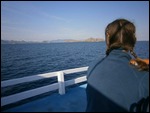
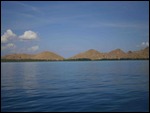
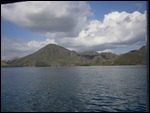
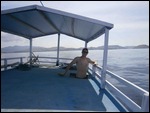



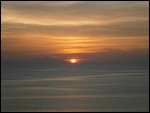
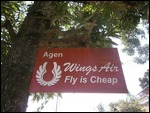
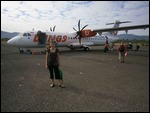
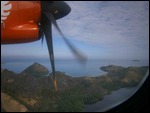
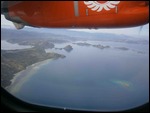
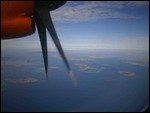
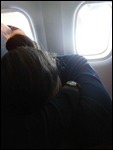
2025-05-22